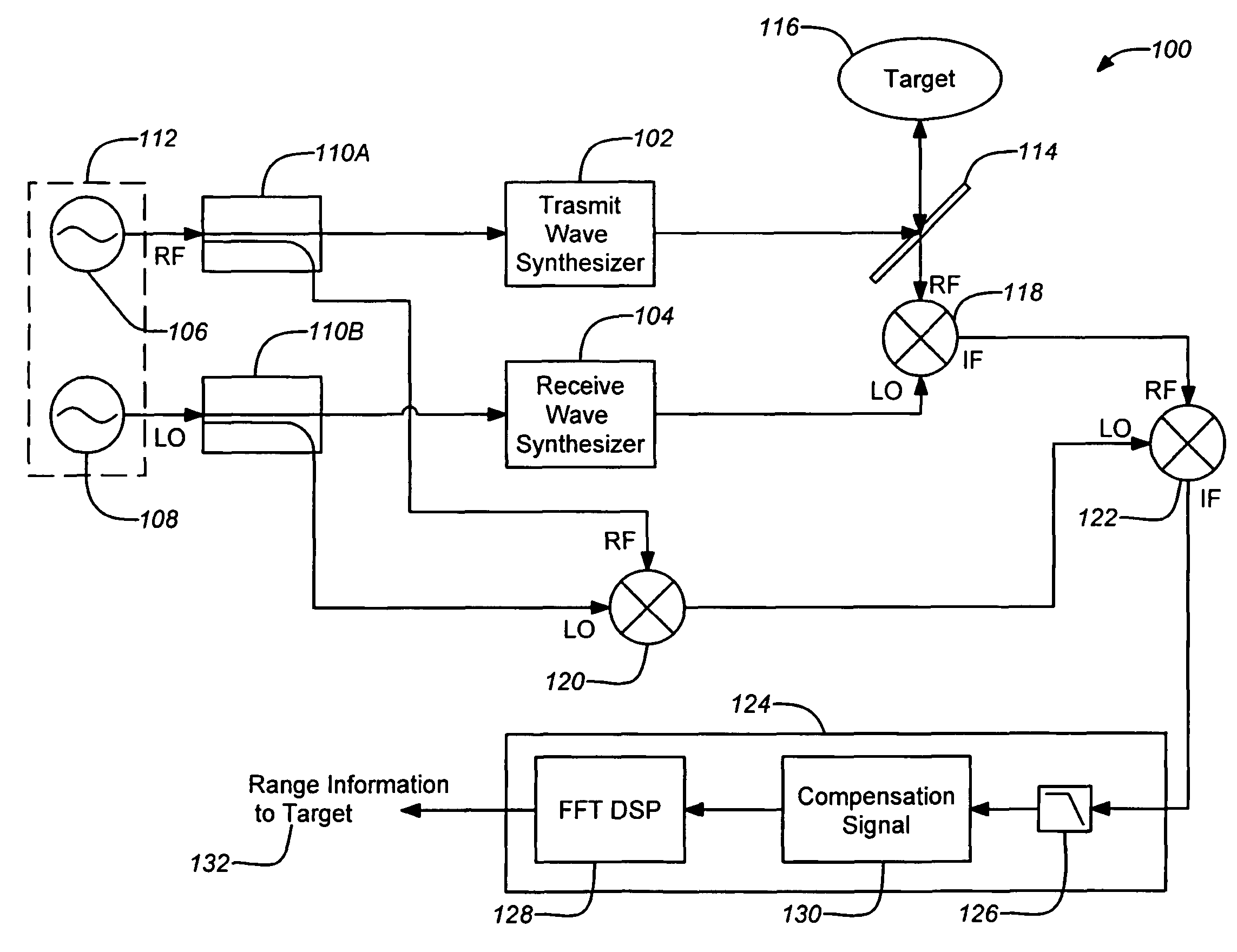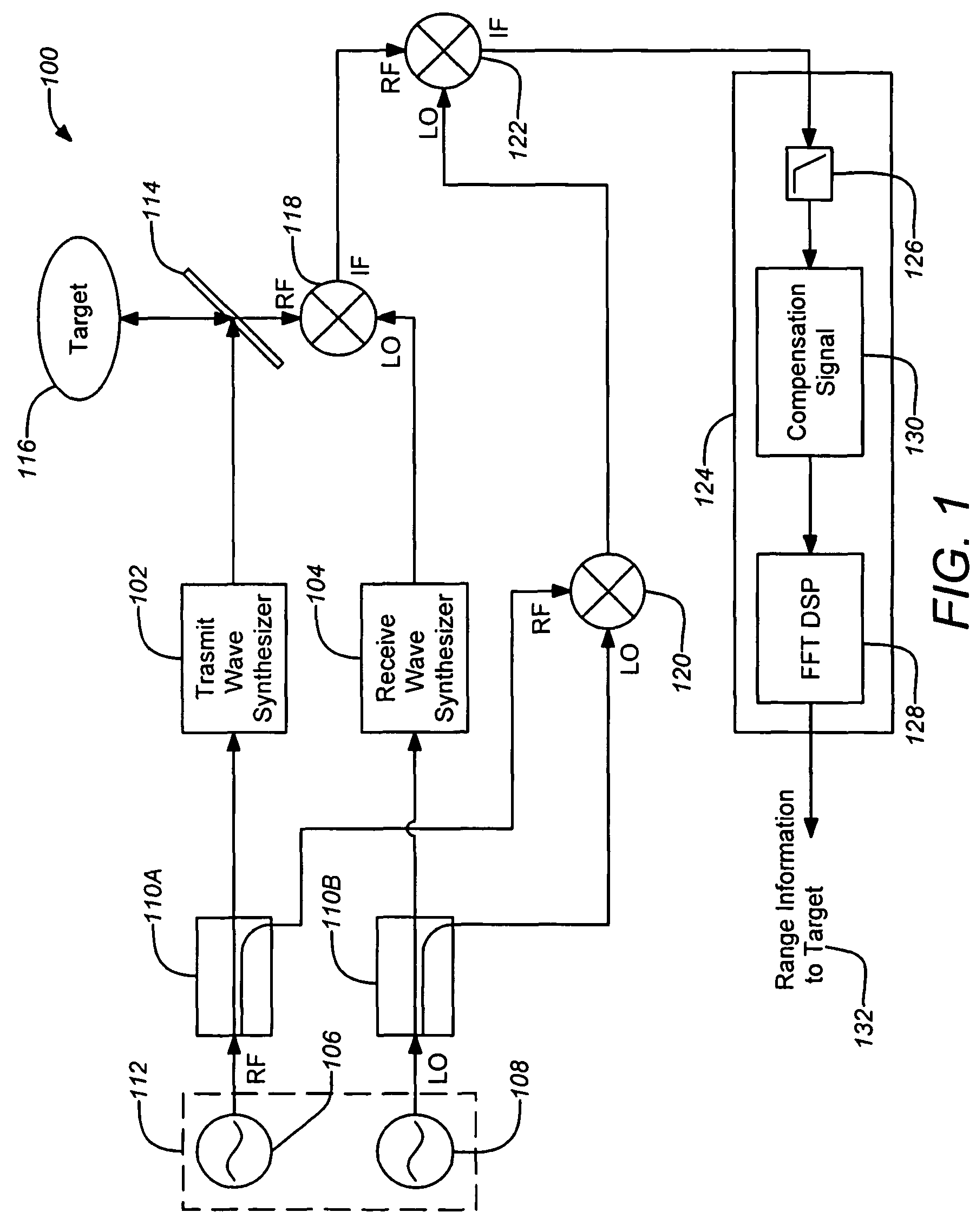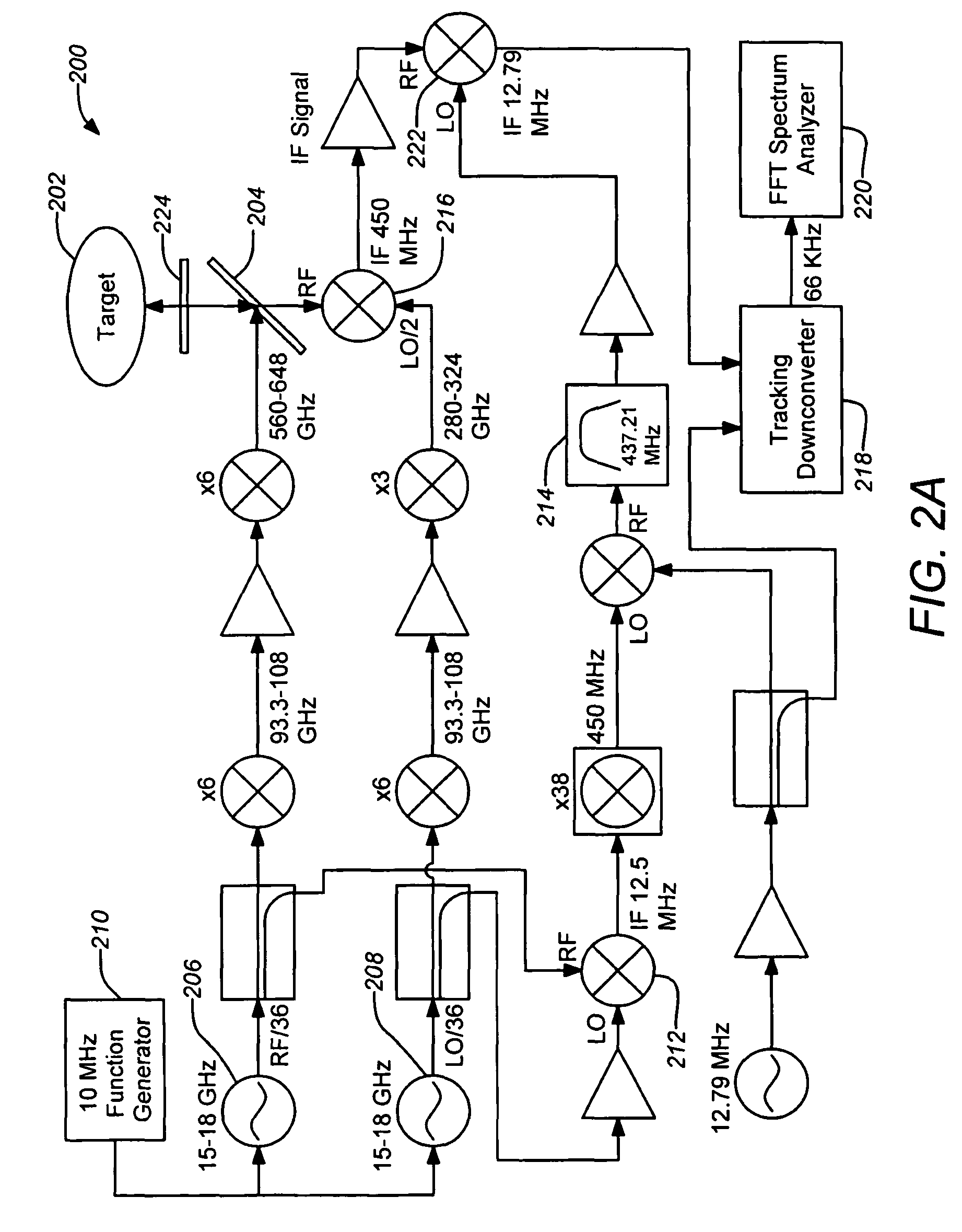High-resolution three-dimensional imaging radar
a three-dimensional imaging and high-resolution technology, applied in the field of high-frequency real-time aperture three-dimensional radar imaging systems, can solve the problem of near perfectly bandwidth-limited range resolution of detected signals, and achieve the effect of high signal power
- Summary
- Abstract
- Description
- Claims
- Application Information
AI Technical Summary
Benefits of technology
Problems solved by technology
Method used
Image
Examples
Embodiment Construction
1. Overview
[0040]An imaging radar is described that operates at submillimeter wavelengths for applications ranging from concealed weapons detection to planetary trace-chemical identification. Unlike conventional radars, which typically operate below 100 GHz (i.e., wavelengths greater than approximately 3 mm), a system operating well above this, e.g., 670 GHz, is capable of very high imaging resolution in three dimensions because since its high modulation bandwidth gives higher range resolution and its shorter wavelength gives higher lateral image resolution for any fixed antenna aperture size. Using a novel signal generation architecture, the submillimeter radar is capable of quickly, quietly, and linearly frequency-sweep over a bandwidth of 18 GHz, thus permitting an ultra-high range resolution of less than 1 cm. With an aperture size of 50 cm, the radar is also able to resolve targets within 2 cm at stand-off distances of 25 m. In addition, the submillimeter radar is novel because...
PUM
 Login to View More
Login to View More Abstract
Description
Claims
Application Information
 Login to View More
Login to View More - R&D
- Intellectual Property
- Life Sciences
- Materials
- Tech Scout
- Unparalleled Data Quality
- Higher Quality Content
- 60% Fewer Hallucinations
Browse by: Latest US Patents, China's latest patents, Technical Efficacy Thesaurus, Application Domain, Technology Topic, Popular Technical Reports.
© 2025 PatSnap. All rights reserved.Legal|Privacy policy|Modern Slavery Act Transparency Statement|Sitemap|About US| Contact US: help@patsnap.com



